Plan Your Strategy
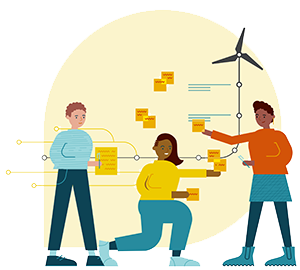
-
Phase 3
- Plan Your Strategy
-
Phase 4
Public Launch
-
Phase 5
Organize!
-
Phase 6
Implementation and Beyond
-
Contact Us
Get help, give feedback, or share resources
Visioning
What does your community care about and need? Now that we’ve taken time to listen, learn, and build relationships so that there are folks at the table who represent the different aspects of your community, it is time to build your local campaign plan.
Campaign Planning Template
Complete this Campaign Plan template to help you navigate Phase 3.
To begin designing your campaign plan, start with where you want to go. Work with your team and partners to develop a shared vision on what an equitable transition to 100% clean, renewable energy looks like for your community.
Vision for 2050
Let’s say it’s the year 2050 and 100% clean energy for all is achieved across all sectors: electricity, buildings (heating/cooling), and transportation! Amazing!! What does that look like? Who is there? What are they doing? Where is energy coming from? How are decisions made? How are the community’s current values and its history reflected in this vision?
Identify barriers to your local work by leading your team members through a “visioning activity.”
|
Activity |
Independent - Visions |
Partner Share - Visions |
Independent - Structural Barriers |
Partner Share - Barriers |
|
Expected time |
5 minutes |
5 minutes |
3 minutes |
3 minutes |
|
Prompt |
First, close your eyes and picture what your community will look like in 2050. You’re stepping out of your front door and looking around, walking through your neighborhood. Then, take some time to sketch your vision onto a piece of paper. |
Describe your vision to your partner |
Examine your picture and think about structural barriers that exist currently that are preventing your communities from reaching components of your vision. |
Share what barriers you identified |
|
Questions to consider |
|
|
|
Power Mapping
Why isn’t this vision happening right now, even though it sounds so good? The answer is power.
“Power” is defined as the ability to act. It is, in and of itself, totally neutral, but power can be used for good or evil. In thinking about the big vision of 100% clean, renewable energy for all for your community, imagine scales. What power is on our side and what power is on the other side wanting to keep the status quo?
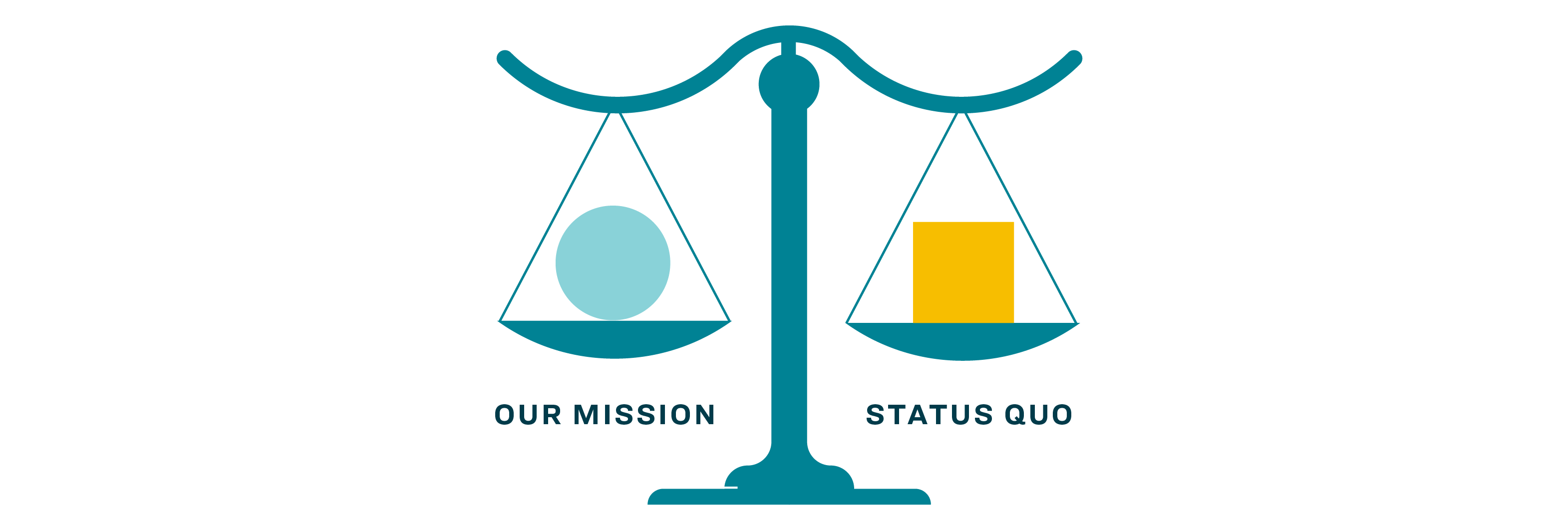
When it comes to fighting for clean energy, we’re not all on an even playing field. There is major power against this movement. It’s important to set campaign goals that allow you to use and grow the power your campaign has in order to shift those scales.
-
Build power on our side. We can grow our movement! We can bring new people in. We can work with partners. We can leverage smaller power from the grassroots for bigger power—such as working to get a church to move to 100% clean energy and then using their influence and network to move others. We can also invest in ourselves through trainings to become stronger individual advocates.
-
Decrease power on their side. Moving people from being actively against us to actively with us is hard and time consuming. What is more likely is that you can neutralize their active opposition. Connecting to shared values is one approach. If the reality of climate change doesn’t sway an opponent, maybe the economic promise of renewable energy or a shared love of wild spaces will.
-
Change the playing field. Explore how and why the other side has power on this issue. You can change the way that rules and decisions are made to shift where power is held. Making the decision-making process more transparent, inclusive, and representative of those most impacted by the issues has long-lasting results and brings us closer to a democratic energy system.
-
Change the mindset. Community values, issue framing, and deeply held beliefs can tilt the scales in a way where people more easily fall into one side or the other. If your community deeply identifies as a welcoming small town that cares about its neighbors, what would happen if you shifted the conversation around energy affordability to align with those values?
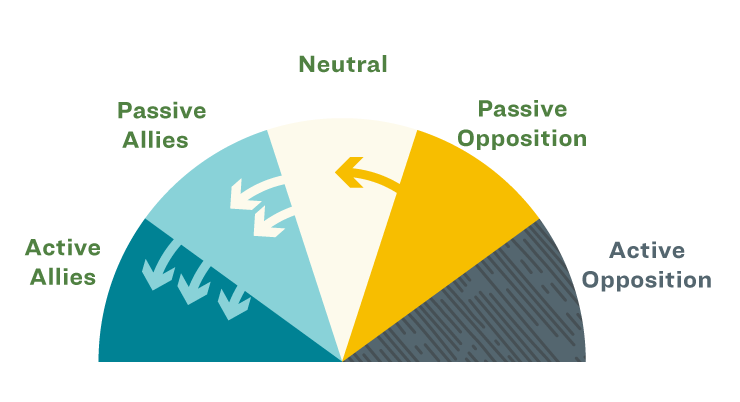
When you think about the barriers to 100% clean energy that you want to see eliminated, who is yourtarget—the one decision maker who has the power to give us what we want? This is always a person, not a position or an institution. That’s because there is someone in that position or at that institution who can give us what we’re looking for. What power do you have to affect that individual? What people or groups influence them that you have the power to affect? This will be the audience you want to reach.
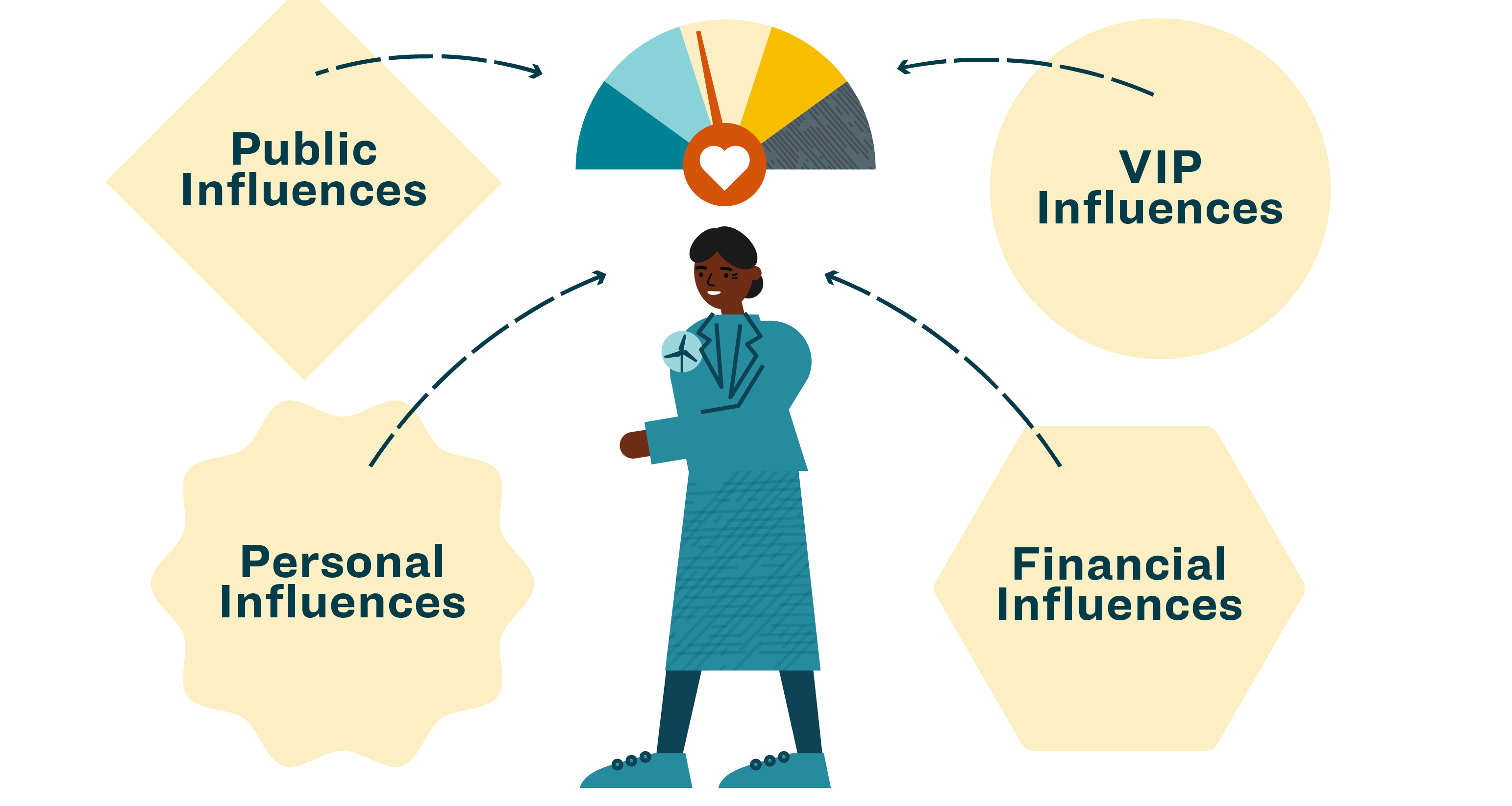
Develop Strategy
We rarely win just by asking our decision maker nicely. If that were the case, and good ideas and facts always won, we would be living in a very different world! To accomplish your goals, you need a strategy for building power and then flexing that power through action. To do this, the next step in the planning process is to determine the path—or strategy— to reach your goal.
Remember that all actions must be within the definition of a C3 campaign.
Your strategy should include a sequence of opportunities to take action and meet with or influence your administrative target, or decision maker. These steps are called tactics. Tactics show and build power, and the tactics we choose should always be advancing the campaign along its strategic path while giving our decision maker and our fellow community members opportunities to choose to stand with us. If you don’t have a strong strategy going into your campaign, your actions will be aimless and use up energy without getting you closer to the end goal.
To set your strategy, you need to understand a decision maker’s self-interest. What does your target want and how can we influence whether or not they get it? When you know what their self-interest is, you’re able to craft theories on how we can use what we have to grow our power or use our power to get them what they want, so we can win. There might be a combination of theories!
For example, if the mayor wants vocal support from their constituents and we know they care a lot about being seen as a leader on education, we can explore a few things:
-
Media: The mayor probably wants the media to cast them in a positive light and cover their work on education.
-
Grasstops: Leaders in education, such as the superintendent of the school district or the head of the teachers’ union, have big networks and contacts and can often speak to and for the groups they represent. The mayor wants these groups’ support.
-
Grassroots: Hearing from many students, teachers, and parents would likely influence the mayor. Teachers, parents and high school seniors also belong to the mayor’s constituency.
After thinking about how you could demonstrate power, you need to think about how to build it. What are the activities you can do to move more people into action with us? What do they need? How can you reach them and provide them those opportunities to act? Why would they want to take action with us? And why is now the time?
Everyone’s self-interest is different. Understanding the self-interest (the values and motivators) for volunteers, activists, and community members is important. Why you do this work is likely different than why they would want to take action.
The Story
Another piece of the campaign plan is developing your story and key messages. Stories are what help generate support for the campaign’s issues, motivate decision makers to take action, encourage your community to get engaged, and demand that the clean energy transition leaves no one behind.
Winning hearts and minds will also help you outrun opponents. Storytelling calls in our values and elevates the emotional impact of our work. Facts and figures alone are not enough to win. Effectively and strategically communicating “why” the work of your campaign matters will change public narrative and advance your campaign goals.
Develop and share your story
Learn how to develop your campaign’s story and leverage a communications strategy in the Communications guide.
Plan Backwards
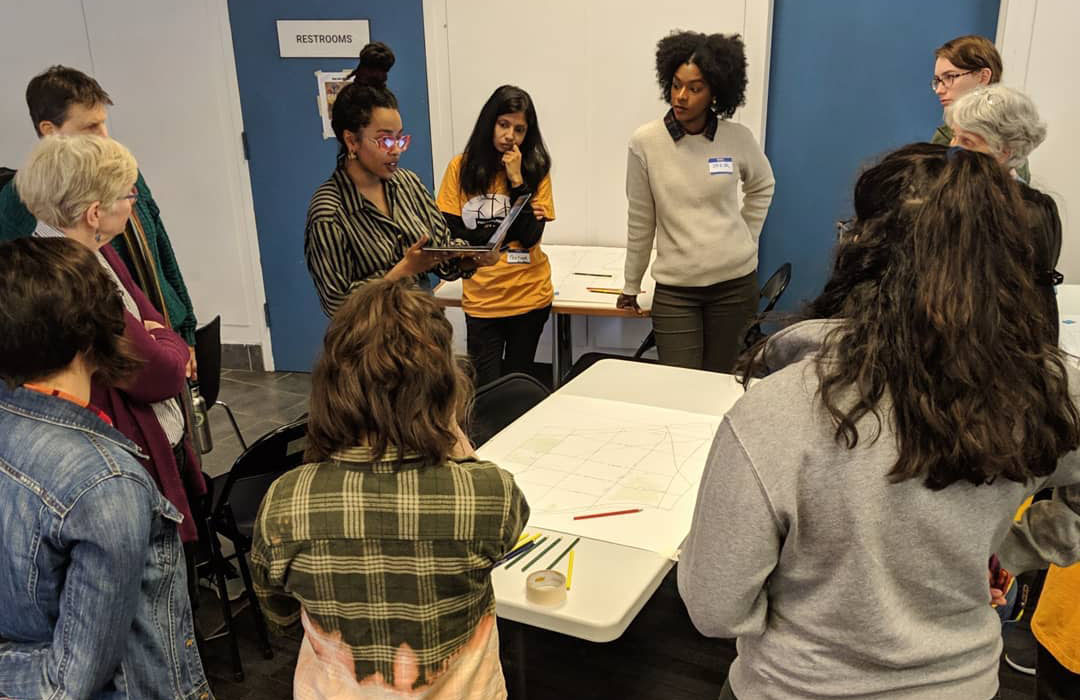
Neighborhood workshop on local energy impacts and environmental racism in Philadelphia, PA.
Goals give us direction, so start by setting some! Generally, there are three types of campaign goals:
-
Long-term goals
-
Long term goals take 2 to 4 years to complete.
-
They address the barriers between where you are today and your vision.
-
Long-term goals should be both realistic and ambitious.
-
They compound over time towards achieving your vision. After you achieve a long-term goal, the work continues onto the next goal.
-
Example: City Council passes a renewable energy policy.
-
Medium-term goals
-
Medium-term goals have a timeline of about 6 months to 2 years.
-
They must have a clear target.
-
Medium-term goals are often tactics to push your target. They are milestones to achieving a long-term goal.
-
Example: Delivering 2500 petitions to the school board president.
-
Short-term goals
-
Short-term goals take 1 week to 6 months to complete.
-
They are most often tasks that can be delegated to team members, whether individually or as a small group.
-
Short-term goals support medium- and long-term goals by laying out the steps needed to make your tactics possible. Think of these as a to-do list!
-
Example: Hosting a press event and creating a press release.
Starting from achieving your long-term goal, plan backwards to write your timeline. What has to happen for the decision maker to say yes? What tasks need to be completed before that? All advocacy campaigns have a series of milestones that you must hit on your way to victory. Medium-term goals build on each other and create momentum toward the specific long-term goal you’ve established. Additionally, these milestones can serve as catalyzing moments to build buy-in among your supporters, strengthen your volunteer teams, expand your allies and volunteers, and generate media for your campaign. In series, these goals—short, medium, and long—are your campaign’s strategy.
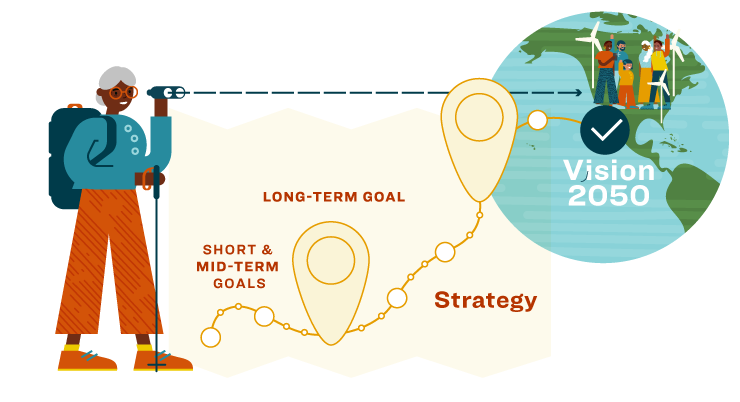
Determine, as a team, what messages, actions, events, and people will appeal to or influence your target decision maker. Then, make goals related to them. See the following two examples for how this is done:
Imagine that your mayor was previously a superintendent of the school system. You might use a grassroots strategy to demonstrate that schools are leading the way to clean energy. In this case, you would aim to get a commitment from the current superintendent by working with parents or by launching a community solar project with the high school.
Alternatively, imagine that your local leader is most concerned about the business community. You might use a strategy to demonstrate economic potential. Set a goal of getting some number of local business owners and business associations to co-sign a letter, work to get an opinion editorial (op-ed) published by an ally on the chamber of commerce, or host a green jobs fair.
Often, campaign teams might spend a lot of time and energy on an endless series of events or actions that don’t result in any outcome. Teams with clear goals and a strong strategy to achieve those goals are more likely to win and also build a movement. Planning is a challenging task, but investing time in it on the front end of your campaign will pay off many times over.
Any strategy will incorporate Communication and Online Organizing tools. Be sure to read both sections as you plan your goals and strategy.
100% Commitments
The next step is to craft a set of recommendations for a strong, equity-centered 100% commitment for your community. Then draft what a clean energy commitment would need to include to transition your community to that vision. Here’s how to start:
-
Bring in the right people. Discuss who the best people are to facilitate the process of crafting these recommendations. Consider reaching out to someone who works with people directly impacted by your local energy system and is well respected by community groups.
-
Take a look at this guide to inclusive facilitation.
-
Be specific to your community. What a transition to 100% clean energy looks like in Atlanta, GA, is going to be different than it will in Tulsa, OK, and the commitment language should reflect that. While there is no one-size-fits-all policy, we do have a set of Guidelines for Community Commitments to 100% Renewable Energy to serve as a baseline.
-
Keep everyone involved. The work in this campaign does not end with securing a commitment. Ensure that the commitment language reflects what the community needs and is created with community input and buy-in. This is important so that the public continues to be involved and hold the decision maker accountable to implementing the vision.
For example, in Portland, OR, there was an initial draft commitment that many people felt was pretty great, but it wasn’t created with everyone at the table. After involving more groups and working with tribal communities to revise the language, the commitment was strengthened and adjusted to better meet the needs of more community members. Additionally, more people are now interested in seeing the commitment through and will hold decision-makers accountable. Learn more about this story and using inclusive language and practices in Step 3 of the Communication 101 guide.
-
Establish an Accountability Framework. Phase 6 of this Campaign Roadmap focuses on a set of tools for holding your local decision-makers accountable to the commitment they’ve made to 100% clean, renewable energy. The Shared Accountability Framework helps any team of activists and city leaders consistently answer a key question: “Are we on or off track toward our goal of an equitable transition to clean energy?”. Alongside our Shared Accountability Guide, it provides direction for creating a pathway of goals and milestones to 100%.
Many individuals and organizations in the clean energy movement, including the Sierra Club, possess social and economic privilege that are often not afforded to many of the communities most negatively impacted by an unjust energy system. By bringing others to the process as equals, we are using the privilege that Sierra Club carries to bring more community members into the decision-making process. This approach aligns with our Campaign Principles while facilitating the community-level involvement necessary for long-term progress and accountability.
Resource
Staying focused on justice
Follow our Campaign Principles to ensure your campaign is just and equitable.
A community-wide commitment to 100% renewable energy should include the following core elements:
-
Efficiency First: Reducing the amount of energy used to power our economy while scaling up energy efficiency is essential to empowering a 100% clean energy future for all, and will make reaching that target easier and more cost effective.
-
Equitable and Just: A commitment to achieving equity, affordability, and access for all members of the community in the transition to 100% renewable energy.
-
Clean and Renewable: A clear definition of clean and renewable resources.
-
100% Renewable Electricity by 2035: A full transition of the electricity sector to clean, renewable energy.
-
All Energy-Use Sectors by 2050: A commitment to transition other energy sectors to 100%, including transportation and heating and cooling.
-
Inclusive and Transparent Planning and Implementation: A commitment to a transparent and inclusive process for planning and implementation, ensuring that the public has an opportunity to participate.
-
Local Generation and Job Creation: A goal for how much of the community’s energy needs will be met by local, distributed generation.
-
Collaborate with Neighboring Communities: A commitment to work with surrounding communities in achieving aligned clean energy and equity goals.
-
Advocate: A commitment to advocate for policies or regulations at the state, regional and/or federal level that aid the city in their transition, and negotiate with existing utility service providers.
-
Demonstrate Immediate Progress: Build, support or incentivize clean energy projects in your community, and prioritize projects that benefit frontline community residents, especially those impacted by fossil fuels.
Try to answer these questions before moving on.
A. A target is always a person, not an institution or company.
True! Your strategy should have short-term, medium and long-term goals.
False! All campaigns should be inclusive of all communities (and ideally neighboring communities as well) and ensure that all people experience equitable and just benefits from a change in energy policy.